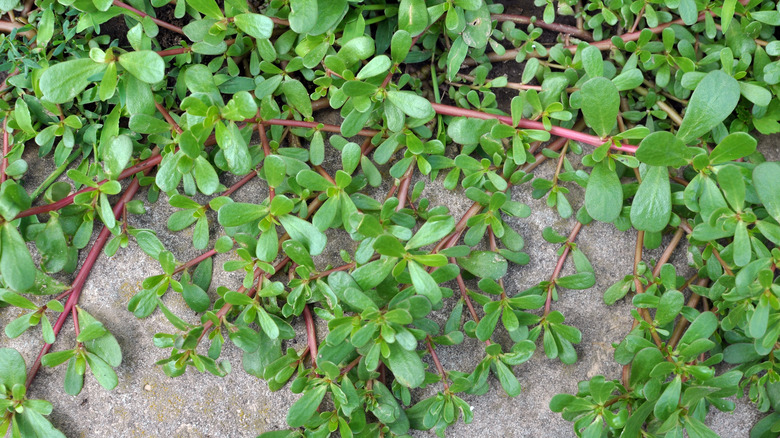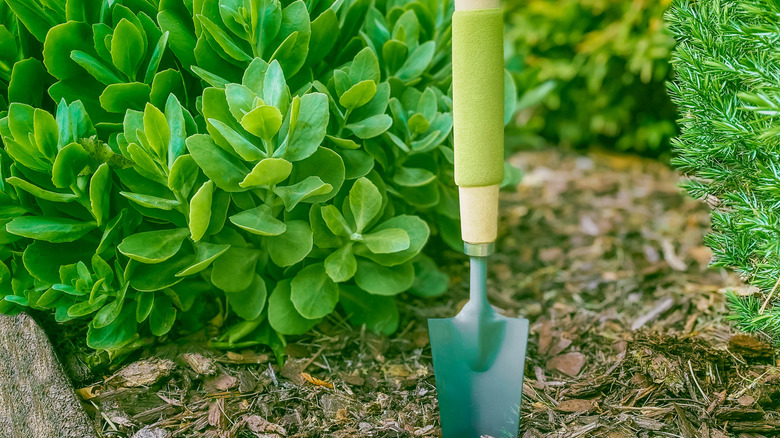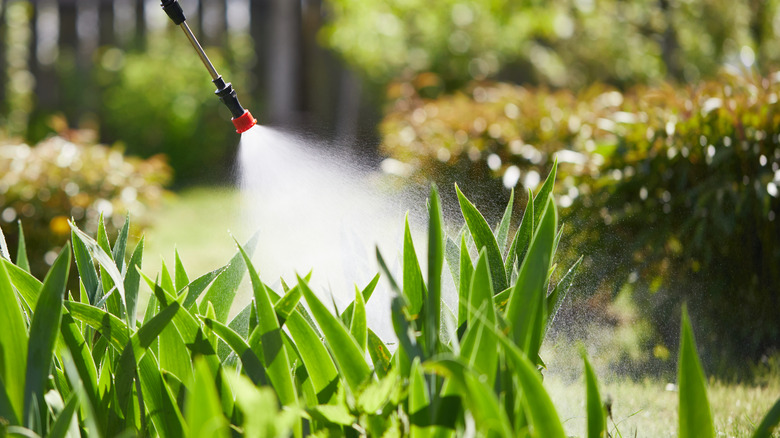Banish Out-Of-Control Purslane From Your Garden With A Few Simple Steps
Weeds like purslane can take your garden or lawn from a picture-perfect oasis to a frustrating and never-ending project. Purslane (Portulaca oleracea) is an annual weed that pops up in yards during summer months. There are a variety of strategies for removing and preventing purslane in lawns and gardens, but some of the best solutions include smothering the weeds, pulling or hoeing out the purslane, and in some cases, using post-emergent herbicides. Because purslane seeds can survive for 30 or more years before germinating, you likely won't be able to fully rid your yard of the weeds in one year. But if you are diligent, you should hopefully notice fewer and fewer of these plants each summer.
While purslane is not native to North America, it's now found throughout the continent, and much of the world. On the bright side, as long as you don't use any herbicides, you can eat the purslane you find growing in your garden and lawn, since it's entirely edible and often recommended as an addition to salads. If you're not sure whether or not the weed in your yard is purslane, look for a low-growing plant that spreads out from a central point. Purslane is a type of succulent and can thrive in a variety of settings, including drought-prone areas with poor soil.
Smothering and physically removing purslane
If you've identified that the weeds in your garden are indeed purslane, you have a few options for dealing with it. One of the easiest and best options is to simply smother them with mulch. Mulch doesn't just benefit your garden by keeping soil moist and protecting plant roots from temperature changes, it is also one of the best ways to keep weeds out of your flower beds. Mulch is especially effective against purslane, as it can cause the plants to quickly rot and die.
If purslane is growing in random spots in your yard, it may not be practical to smother it with mulch. Instead, you can try removing the plants with a hoe or small garden trowel. Just be sure to fully remove the taproot, as otherwise, the plant may grow back. Who wants that? Be aware that purslane can set seed very quickly, so it's important to remove the plants as soon as you see them, or you may have additional generations of purslane to deal with.
Using herbicides to control purslane
While it's generally best to avoid using herbicides against weeds like purslane, there are some chemical options available if your attempts to smother or manually remove purslane fail. Pre-emergent herbicides which kill seedlings before they can become established, haven't been found to work well against purslane, unfortunately. Post-emergence products like Roundup contain glyphosate, which can be effective at killing the weeds eventually. But it is important to take precautions when using Roundup for weed control.
You need to wear gloves and eye protection when using any chemical-based herbicide and avoid using it on windy days. It's also imperative to follow all the instructions on the Roundup weed killer packaging and bottle. Additionally, if you are trying to kill purslane that is in a garden bed, you need to be especially careful to avoid overspray — which could damage other plants. Frustratingly, even with all that work, the herbicide may not kill the purslane until after it has already produced seeds and started the cycle anew. Your war with purslane may be an ongoing one.


